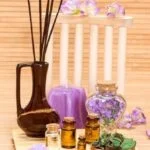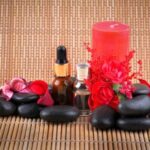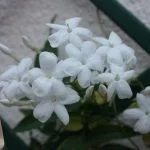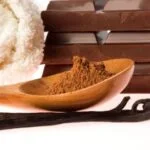Aromatherapy bottles are essential tools in the practice of aromatherapy, a holistic healing treatment that uses natural plant extracts to promote health and well-being. These bottles play a crucial role in preserving the potency and aroma of essential oils, ensuring their effectiveness in various therapeutic applications. Aromatherapy bottles, also known as essential oil bottles or vials, come in different forms, sizes, and materials to cater to the diverse needs of practitioners and enthusiasts.
The history of aromatherapy can be traced back to ancient civilizations such as Egypt, Greece, and China, where aromatic plants were used for medicinal and ceremonial purposes. These cultures recognized the powerful healing properties of essential oils derived from plants like lavender, eucalyptus, and peppermint. Over time, the art of aromatherapy evolved, leading to the development of specialized containers like aromatherapy bottles to store and dispense these precious oils effectively.
Understanding the various types, sizes, and materials used in aromatherapy bottles is essential for anyone looking to harness the benefits of essential oils. From glass dropper bottles ideal for blending custom oil recipes to roll-on bottles for convenient application on skin or pulse points, each type serves a specific function in aromatherapy practices. By exploring the world of aromatherapy bottles, individuals can enhance their holistic health journey and experience the therapeutic effects of essential oils firsthand.
History of Aromatherapy
Aromatherapy has been utilized for centuries by various ancient cultures around the world, each incorporating aromatic plants and oils for their healing properties. The history of aromatherapy dates back to more than 6,000 years ago, where civilizations such as the Egyptians, Greeks, Persians, Indians, and Chinese recognized the therapeutic benefits of essential oils. These ancient cultures used aromatics in different forms, including incense, perfumes, and balms for spiritual rituals, medicinal purposes, and personal hygiene.
Here are some examples of how ancient civilizations incorporated aromatics:
- Egyptian Civilization: Egyptians were known for using essential oils in embalming practices and religious ceremonies. They believed that scents could transport them to the realm of the gods.
- Greek Civilization: The Greeks utilized essential oils in massage therapy to promote physical well-being and relaxation. Hippocrates, the father of modern medicine, also believed in the power of aromatic substances for healing.
- Indian Civilization: Ayurveda, an ancient Indian healing system, incorporated aromatherapy into its practice through the use of natural oils like sandalwood and jasmine for various health benefits.
By studying how these ancient cultures harnessed the power of aromatics, we gain a deeper appreciation for the rich history of aromatherapy and its influence on modern holistic practices. The knowledge passed down through generations has shaped our understanding of the therapeutic effects of essential oils and paved the way for the development of specialized tools like what are aromatherapy bottles called today.
Understanding Aromatherapy Bottles
Aromatherapy bottles are essential tools in the world of aromatics, designed to store and preserve the potent properties of essential oils. These bottles come in various types, sizes, and materials, each serving a specific purpose in the practice of aromatherapy. Understanding the different options available can help enthusiasts make informed choices when it comes to selecting the right container for their essential oil blends.
Here are some common types of aromatherapy bottles:
- Amber Glass Bottles: Known for their ability to protect oils from UV light damage
- Cobalt Blue Glass Bottles: Ideal for light-sensitive oils due to their dark color
- Roll-On Bottles: Convenient for applying oil directly to the skin, usually made of glass or plastic
When it comes to sizes, aromatherapy bottles typically range from 2 ml sample vials to 30 ml dropper bottles. The choice of size depends on personal preference and how frequently the oil will be used. Larger sizes are suitable for regular use at home or in professional settings, while smaller sizes are perfect for travel or sampling different blends.
In terms of materials used, glass is the most common choice for aromatherapy bottles due to its non-reactive property with essential oils. However, some bottles may also be made of plastic or stainless steel for specific applications. It is important to consider the compatibility of the material with the oil being stored to ensure proper preservation and longevity.
What Are Aromatherapy Bottles Called
Aromatherapy bottles are essential tools in the world of essential oils, allowing users to store and use their favorite aromatic blends. These bottles come in various types, sizes, and materials to cater to different needs and preferences. But have you ever wondered what these specialized containers are actually called?
Essential Oil Bottles
One common term used to refer to aromatherapy bottles is “essential oil bottles.” These containers are specifically designed to store and protect essential oils from light, air, and moisture, which can degrade the quality of the oils over time. Essential oil bottles are usually dark-colored, such as amber or cobalt blue, to prevent light exposure that can affect the potency of the oils.
Aromatherapy Vials
Another name for aromatherapy bottles is “aromatherapy vials.” Vials are typically smaller in size compared to traditional essential oil bottles and are often used for creating sample sizes or travel-friendly versions of essential oil blends. These vials can come in a variety of materials like glass or plastic, depending on the intended use and portability requirements.
Perfume Bottles
In some cases, aromatherapy bottles may also be referred to as “perfume bottles.” While perfume bottles are primarily used for storing fragrances, they share similarities with aromatherapy bottles in terms of design and functionality. Perfume bottles may feature intricate designs, atomizers, or roll-on applicators that make them suitable for both perfumes and essential oil blends alike.
By understanding the different names and terminology associated with aromatherapy bottles, enthusiasts can better navigate the world of essential oils and find the right container for their specific needs. Whether you prefer essential oil bottles, aromatherapy vials, or perfume bottles, choosing the right container is crucial in preserving the quality and efficacy of your favorite aromatic blends.
Choosing the Right Aromatherapy Bottle
Aromatherapy bottles are essential for storing and preserving the potency of essential oils. When selecting the right aromatherapy bottle, there are several factors to consider to ensure the quality and effectiveness of your blends. One crucial aspect to keep in mind is the material of the bottle.
Dark glass bottles, such as amber or cobalt blue, are ideal for protecting the oils from light exposure, which can degrade their aromatic properties. Additionally, glass containers are preferred over plastic ones as they do not react with the oils and maintain purity.
Another important factor when choosing an aromatherapy bottle is size. The size of the bottle will depend on how you plan to use the essential oils. Smaller bottles are perfect for creating personal blends or travel-sized remedies, while larger bottles are suitable for storing bulk amounts or creating homemade cleaning products. Consider your usage needs and storage space when determining the appropriate size of the bottle.
Furthermore, it is essential to pay attention to the closure type of the aromatherapy bottle. Most bottles come with either a dropper top or a sprayer cap. Dropper tops are convenient for dispensing precise amounts of oil, making them suitable for blending and massage applications.
On the other hand, sprayer caps are useful for creating room sprays or refreshing mists. Choose a closure type that aligns with how you intend to use the essential oils for ease of application and preservation.
| Aspect | Consideration |
|---|---|
| Material | Dark glass like amber or cobalt preferred |
| Size | Determine based on usage needs and storage space |
| Closure Type | Dropper tops for precise dispensing; Sprayer caps for mists |
DIY Aromatherapy Bottle Recipes
Aromatherapy has been used for centuries as a natural way to promote physical and emotional well-being. One of the key components of aromatherapy is the use of essential oils, which are typically stored in special containers known as aromatherapy bottles. These bottles are specifically designed to protect the potency and quality of the oils, ensuring that they remain effective over time.
When it comes to creating your own aromatherapy blends, choosing the right type of bottle is crucial. Aromatherapy bottles come in various sizes, shapes, and materials, each serving a different purpose. For instance, amber glass bottles are popular for storing essential oils because they help protect the oils from sunlight and UV rays, which can degrade their quality. Additionally, dropper bottles are commonly used for precise dispensing of oil blends.
In addition to the type of bottle you choose, it’s also important to consider how you will be using your aromatherapy blends. For example, if you plan to create massage oils or body sprays, spray bottles or roll-on applicators may be more appropriate.
On the other hand, if you prefer diffusing oils in your home or workspace, glass dropper bottles or inhalers would be suitable choices. Ultimately, selecting the right aromatherapy bottle for your DIY creations can make a significant difference in their effectiveness and longevity.
| Aromatherapy Bottle Type | Best Use |
|---|---|
| Amber Glass Bottles | Storing essential oils |
| Dropper Bottles | Precise dispensing of oil blends |
| Spray Bottles/Roll-on Applicators | Creating massage oils or body sprays |
The Role of Aromatherapy Bottles in Holistic Healing
Aromatherapy bottles play a crucial role in the practice of holistic healing, offering individuals a natural and non-invasive way to promote wellness and balance in their lives. These bottles are specifically designed to store and dispense essential oils, which are known for their therapeutic properties and ability to positively impact both physical and emotional well-being. Through the use of aromatherapy bottles, individuals can harness the power of these aromatic oils to support their overall health on multiple levels.
Benefits of Aromatherapy Bottles in Holistic Healing
One of the key benefits of using aromatherapy bottles in holistic healing is their ability to facilitate easy and convenient application of essential oils. Whether through diffusers, roller balls, sprays, or dropper tops, these specialized bottles allow for precise dosing and targeted usage of aromatics for maximum effectiveness. This makes it simple for individuals to incorporate aromatherapy into their daily routines, helping them experience the healing benefits of essential oils consistently.
Another advantage of aromatherapy bottles in holistic healing is their role in promoting mindfulness and relaxation. The act of blending essential oils, filling up bottles, and applying these aromatic blends can be a meditative practice that encourages individuals to slow down, focus on the present moment, and connect with their senses.
By engaging in this hands-on process with aromatherapy bottles, individuals can enhance their overall well-being by reducing stress levels, improving mood, and fostering a sense of inner peace.
Utilizing Aromatherapy Bottles for Energy Healing
In holistic healing practices such as energy work and Reiki, aromatherapy bottles are often used as tools to amplify energetic intentions and promote balance within the body’s subtle energy systems. By infusing essential oils into these special containers charged with specific energies or affirmations, practitioners can create customized blends that support energetic healing processes.
The vibrational qualities of both the oils and the bottles themselves can enhance the energetic effects of the treatment, making them valuable allies in facilitating deep healing on all levels – physical, emotional, mental, and spiritual.
Aromatherapy Bottles in the Modern World
Aromatherapy bottles have come a long way since their inception, evolving to meet the changing needs and preferences of consumers in the modern world. Today, these bottles are not just functional containers for essential oils, but also avenues for creativity and personal expression. As the demand for aromatherapy products continues to grow, we are seeing an influx of innovative designs and trends in the world of aromatherapy bottles.
One of the latest trends in aromatherapy bottles is eco-friendly packaging. With a growing emphasis on sustainability and environmental consciousness, many companies are now opting for recyclable or reusable materials for their bottle designs. Glass bottles are a popular choice due to their durability and ability to be easily recycled. Additionally, some brands are incorporating biodegradable packaging materials to further reduce their carbon footprint.
Another emerging trend in aromatherapy bottles is customizability. Personalization has become a key feature in many products across various industries, and aromatherapy is no exception. Consumers can now find aromatherapy bottles that can be engraved with their name or favorite quote, making them unique and special.
Some companies even offer bespoke blending services, allowing customers to create their own signature scents tailored to their preferences and needs. This customization adds a personal touch to the aromatherapy experience, enhancing its therapeutic benefits.
Conclusion
Aromatherapy bottles, also known as essential oil bottles or aromatherapy vials, hold a significant place in the world of holistic healing and well-being. These vessels play a crucial role in preserving the therapeutic properties of essential oils and allowing individuals to benefit from their soothing effects. Throughout history, various cultures have utilized aromatics for their healing virtues, recognizing the power that these natural extracts possess.
In today’s modern world, the use of aromatherapy bottles continues to grow in popularity as more people turn to alternative therapies for overall wellness. The wide range of bottle types, sizes, and materials available allows individuals to customize their aromatherapy experience according to their preferences and needs. From amber glass bottles that protect oils from light degradation to rollerball bottles for easy application, there is a suitable option for every user.
Ultimately, the power of aromatherapy bottles lies in their ability to enhance both physical health and emotional well-being. Whether used in massage therapy, meditation practices, or simply as part of a daily self-care routine, these bottles serve as potent tools for relaxation, stress relief, and promoting mental clarity.
By understanding the different names and terminology associated with aromatherapy bottles and choosing the right one for your needs, you can harness the full potential of essential oils for a healthier and more balanced life.
Frequently Asked Questions
What Are Essential Oil Bottles Called?
Essential oil bottles are commonly referred to as dropper bottles or vials. These containers are specifically designed to store and dispense essential oils safely and effectively.
What Bottles Are Used for Essential Oils?
The bottles used for essential oils are typically dark-colored glass bottles, such as amber or cobalt blue, to protect the oils from light exposure and degradation. They usually come in various sizes ranging from 5ml to 30ml with a tight-sealing lid or dropper cap.
What Is an Essential Oil Roller Bottle?
An essential oil roller bottle is a specific type of bottle designed for convenient application of essential oils directly onto the skin. These bottles consist of a rollerball on top that allows users to easily roll the oil onto their skin without any mess. They are especially popular for on-the-go use and targeted application of essential oils.

Are you looking for a natural way to improve your health and wellbeing?
If so, aromatherapy may be the answer for you.





